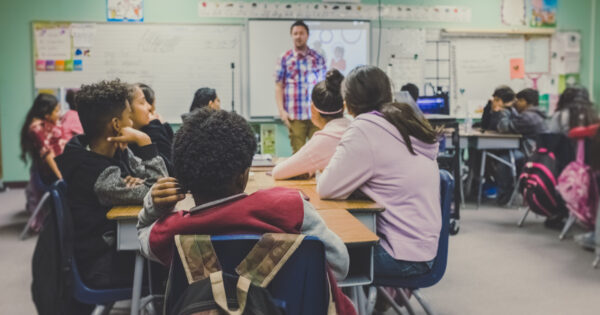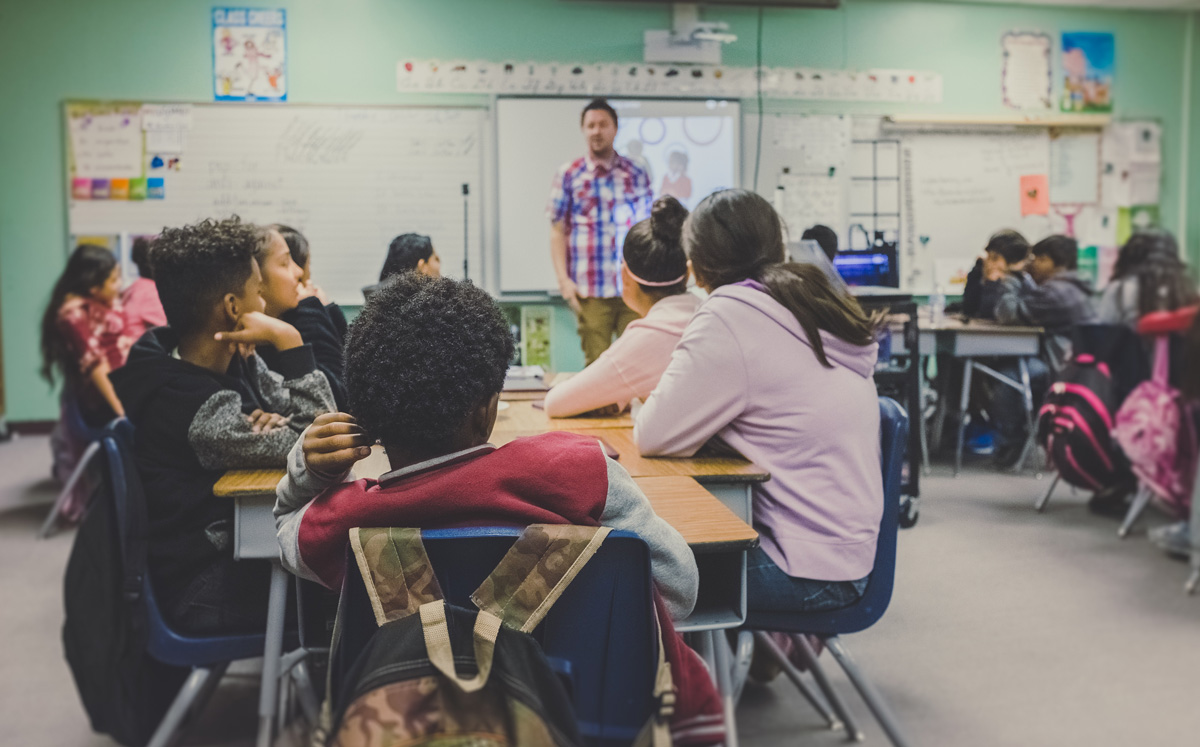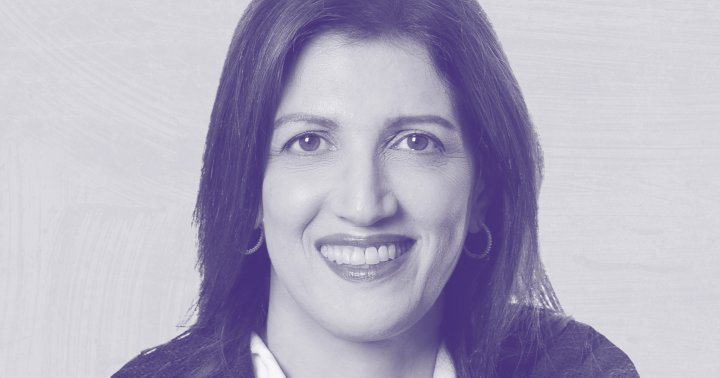Reimagining School Through a Buddhist Lens
Susan Yao explores how Buddhist principles could help us reimagine the American school system. The post Reimagining School Through a Buddhist Lens appeared first on Lion's Roar.

Susan Yao explores how Buddhist principles could help us reimagine the American school system.

Photo by Kenny Eliason.
Imagine a classroom where students sit with their eyes closed in meditation, silently bringing their awareness to the present moment. They practice breathing techniques inspired by Buddhism to help them regulate their emotions.
A bell rings, signaling the end of the meditation. The students open their eyes and turn to test booklets on the desks in front of them. They now begin a high-stakes standardized test that will impact teacher salaries, their ability to graduate, and the amount of funding their school receives, furthering inequality in education.
Schools have failed to harness the main teachings of Buddhism: lessons about human suffering, interconnectedness, and a path to liberation.
There is a deep contradiction in this scene and in the ways Buddhist practices have been used in American K-12 schools. As a Buddhist educator, I was initially excited when mindfulness practices became increasingly popular a decade ago. However, we are using Buddhism to uphold rather than to transform existing educational systems. Meditating before a test to feel calmer does not put into question how or why we test students. Buddhist practices are selected for their usefulness in helping students achieve individual success in the form of grades or rewards. Anger is seen as an unhealthy emotion to be eliminated in order to support disciplinary systems.
Schools have failed to harness the main teachings of Buddhism: lessons about human suffering, interconnectedness, and a path to liberating ourselves and others from that suffering. Instead, we have given students strategies for coping with and ultimately accepting unjust systems.
In 2021, I left my position as a Middle School Head in order to research and reimagine schooling from scratch, using a Buddhist lens. What would it mean to truly rethink American schooling using Buddhist principles in their totality?
First Noble Truth: We Have Problems
In 2020, hundreds of Black alumni of independent schools shared their stories via [email protected] accounts on Instagram. Many painful stories of exclusion, microaggressions, and other forms of racism were laid bare in an effort to force schools to see clearly.
The First Noble Truth of Buddhism teaches us that there is suffering in life; it is inevitable. We must cut through any illusions that it is otherwise, so that we may see clearly and find a way forward. Black independent school alumni gave us an opportunity to see their suffering with brutal honesty. It is our responsibility to sit with and let in this truth.
The reality is that schools do not work for many groups of people. Students, faculty, and staff from marginalized communities often experience the racism, homophobia, or ableism that exists outside school walls. Students with learning differences may struggle to have their strengths acknowledged and their needs met. Students may recreate harmful power dynamics on each other in the form of social hierarchies or bullying.
Yet school communities can struggle–and even refuse–to acknowledge suffering. We want so badly for our schools to be magical, protected bubbles where all students are welcome and thriving. No educator wants to have created a toxic environment. But schools are deeply connected to the communities in which they exist, and that includes systems of oppression and societal crises. It is inevitable.
What if we were willing to see our problems clearly? What if we, like Buddhists, made a regular practice of tuning into each other’s suffering?
Second Noble Truth: We’re Clinging to Our Bootstraps
If you’re familiar with school discipline, you know that plagiarism is met with serious consequences: a grade of zero, detention, or even suspension. While integrity is an important to pass on, these policies are the product of an individualistic and capitalist society that values productivity.
Everywhere in the school system, we see an emphasis on producing work alone. Students are rewarded for individual achievement in grading systems, academic awards, even for individual performance in team sports. Teachers, in turn, are evaluated and even paid based on the quality and quantity of work produced by students. Schools are compared using standardized test scores, graduation rates, and college acceptances.
The Second Noble Truth teaches us that suffering results from clinging to or craving what is impermanent. In the United States, we are attached to this need to be productive from a young age.
When we fail to produce, we suffer. Students and families stress over a few missing homework assignments, some getting caught in a never-ending cycle of catch-up. Teachers worry about losing one hour of instructional time to projects or field trips. I worked in a school that shortened the lunch period by five minutes because it was “unproductive.”
Even when we do produce, we suffer. A-students meet each new assignment with anxiety, afraid to make a mistake and hurt their grades. Teachers exhaust themselves on evenings and weekends lesson planning, grading, and writing reports. The American public criticizes schools for not solving some of society’s most persistent problems, all the while belittling teachers for the number of school vacation days they receive. We all continue on our treadmills, meeting one deadline after another, for the vague promise of a bright future or to keep our jobs for another year.
What if we loosened our hold on this need to be productive? How could we reimagine the purpose of schooling?
Third Noble Truth: Towards Collective Thriving
The late Thich Nhat Hanh tells an old story of a man on a runaway horse who doesn’t know where the horse is going. Buddhism teaches us how to get off the horse and regain control of the reins in order to end human suffering.
If we stepped off the treadmill of individual productivity, we would be able to look around and see all the other people we are connected to. We could see the systems we are connected to. We would tune into the natural world that surrounds and sustains us.
Instead of being a place where we eliminate “distractions” in order to produce as much as possible, school could be a place that teaches us to be community-oriented citizens. Instead of competing with each other, we would deeply understand the ways that we are interconnected. Instead of being accountable only to our individual products, we would learn that we are responsible for each other.
What if students were fully aware of their place in history, in the community, and in a lineage of ancestors? What future would become possible for all of us?
Fourth Noble Truth: Towards Collective Liberation
The Fourth Noble Truth is a path to liberation from suffering. This is where Buddhist schooling in the United States starts to sound like science fiction. Buddhist teachings run counter to current educational practices, and that’s precisely why they have the potential to be transformative. Schools need to incubate new possibilities, rather than reproduce the cultures they are created within.
We must wake up to each other’s suffering. Some schools are on this path, but awareness without action only makes us bystanders.
Schools need to be laboratories where we investigate the root causes of suffering in our society. This cannot be limited to a theoretical unit in the curriculum; we must start with the very real lives of the students, faculty, staff, and families in the school community. School policies and structures must also evolve as we come to understand the ways that they reflect systems of oppression in our society. Too often, schools claim they value social justice but block students and adults who want to bring just practices to the school.
Then, with this knowledge, we need schools to be institutions that ease the suffering in our society. Our students must be prepared to inherit a changing climate, a post-pandemic world, deep inequalities, and scenarios that we adults will not live to see. Individual productivity has its place within a larger focus on practicing being the ancestors we’re meant to become.
In this context, breathing techniques might make a difference.
I am grateful for my thought partner, Laura Dombrowski. I am grateful to speak to educators and alumni at existing Buddhist schools: Koki Atcheson, Daniel Cuthrell, Pieper Toyama, David Randall, and Josh Hernandez Morse. I am grateful to Buddhist educators who are dreaming with me: Jean-Paul deGuzman, Susie Hwang, and Lesley Younge. I am grateful to my editor, Mihiri Tillakaratne, for helping me give shape to my ideas.

 Kass
Kass 
































